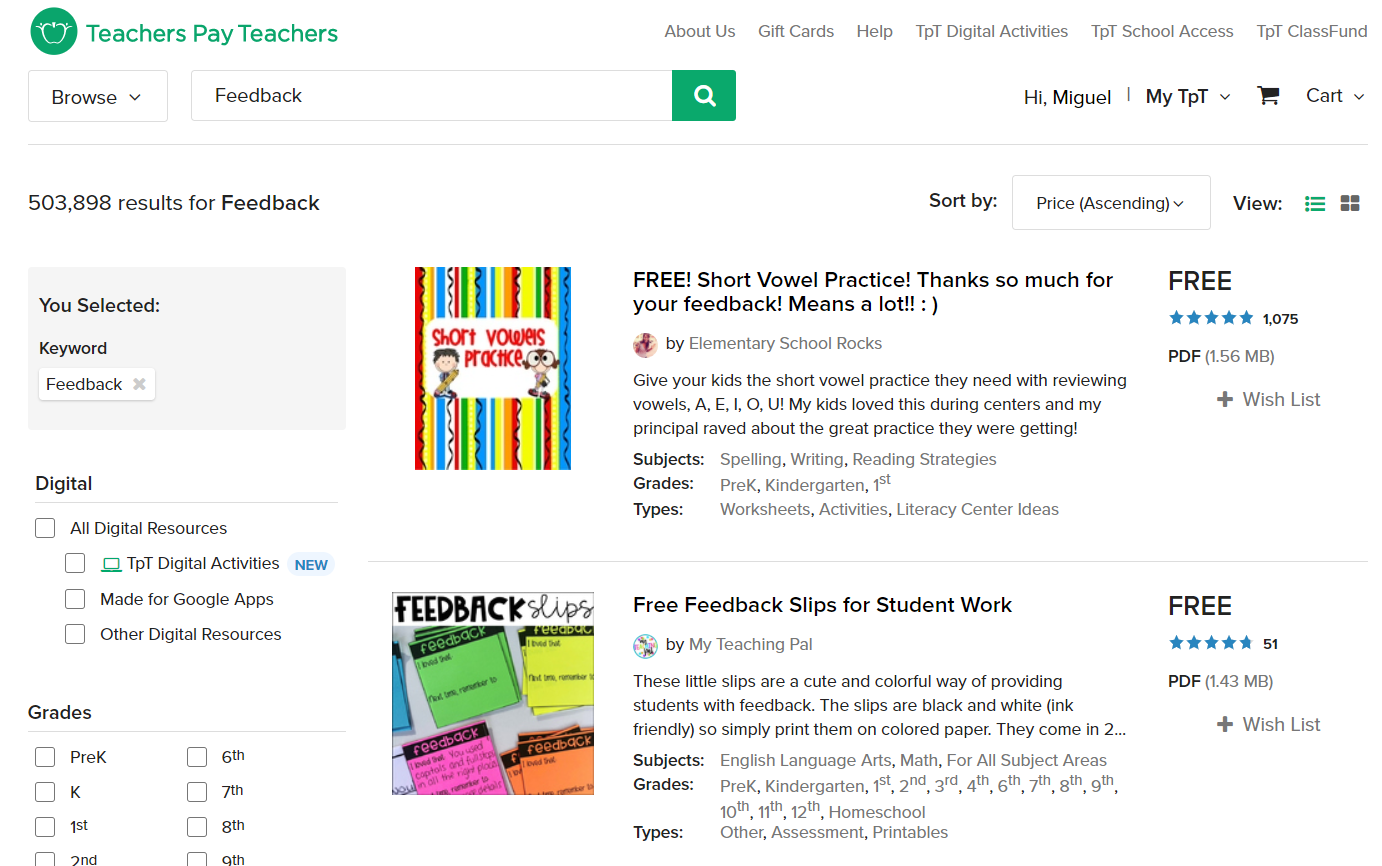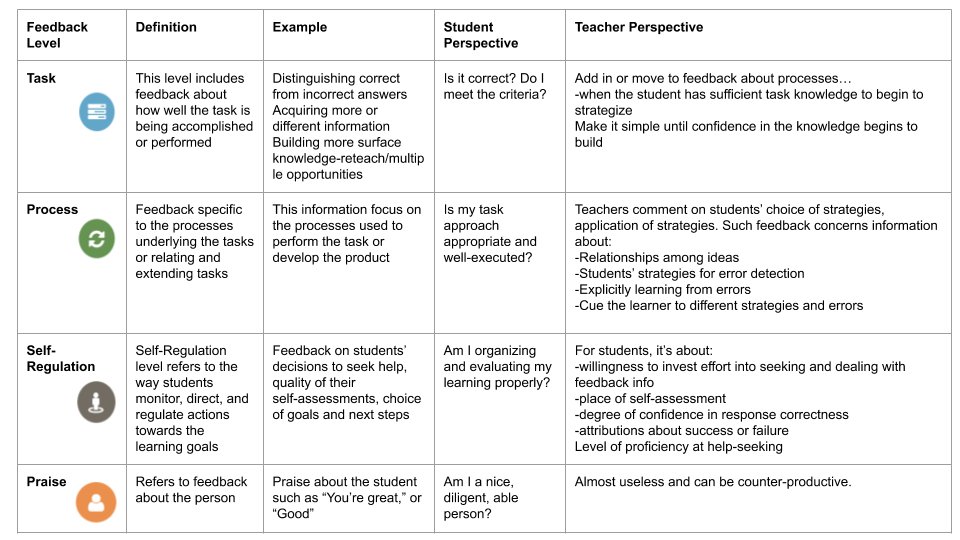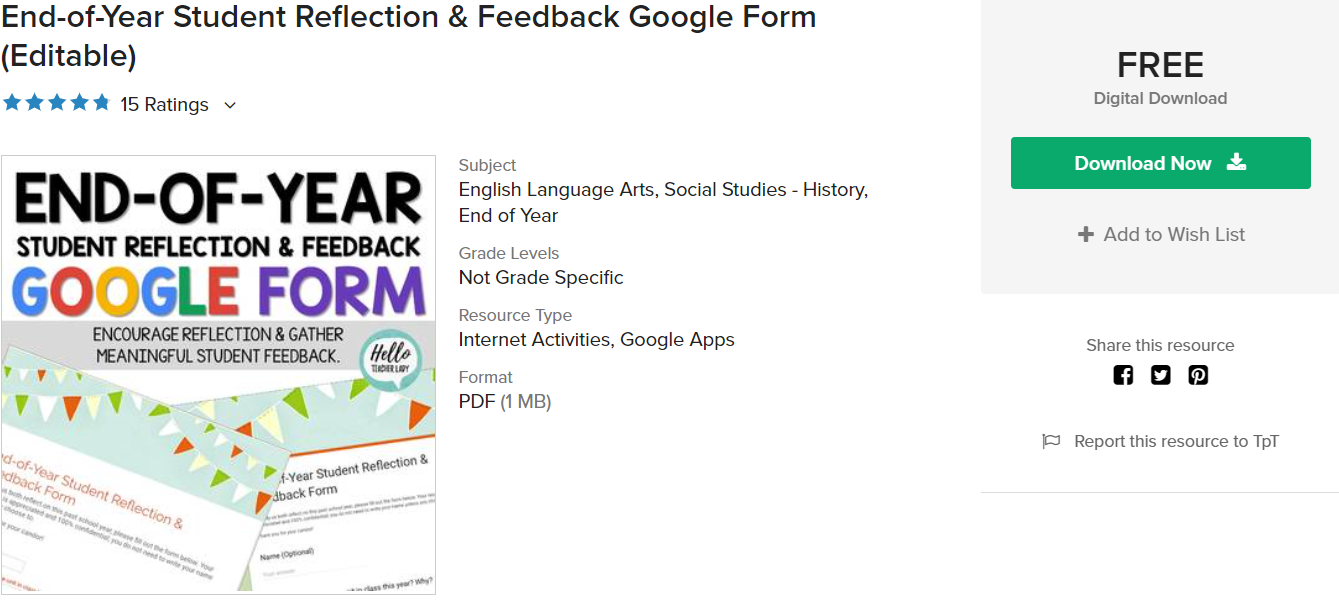Need some amazing resources, but don’t have the time to make them yourself? Why not take a moment to “mine” websites like Teachers Pay Teachers (TPT) for free templates you can customize? In this blog entry, I’ll share some of the top free resources from TPT aligned to instructional strategies. To get you started with some examples, I’ve arranged them according to two important instructional strategies.
Note: Teachers Pay Teachers (TPT) does offer free, as well as paid, resources to educators. Many teachers (and others) sell resources via the Teachers Pay Teacher (TPT) website to supplement their day job of teaching. Inclusion of a resource here does not constitute an endorsement of a particular seller. Rather, included items illustrate some of the free content available for re-use aligned to high-effect size instructional strategies.

A Leap of Faith
What are some ways to organize instructional materials? One approach is to focus on high-effect size instructional strategies. For some ideas, I took a peek at a book published in 2020, The Distance Learning Playbook. The book suggests a variety of strategies we can use. Adapting high-effect size instructional strategies can be a bit of a stretch. In fact, the authors of The Distance Learning Playbook write:
. . .the instructional strategy jigsaw has an effect size of 1.20. Powerful! It should work to accelerate student learning. . .since we are talking about distance learning, it’s important to note that none of the jigsaw studies collected for any of the meta-analyses were done from afar. In this case, we’ll have to take a leap of faith and identify the essential components of a jigsaw and determine how it can be used online.
This blog entry is asking you to take a leap of faith. It involves applying high-effect size instructional (HESI) strategies in ways research recorded success.
Aligning Digital Tools to HESI Strategy
Ask yourself, How does this instructional resource match a strategy that works? Let’s take a look at a few strategies suggested in The Distance Learning Playbook.
Strategy #1: Teacher Clarity (d=.076)
Students can be metacognitive about their own learning. To accomplish this, they need to “recognize when they are learning, when they are not, and how to go about fixing it.” Teacher clarity addresses the following precepts of student learning:
- Organization
- Explanation
- Examples and guided practice
- Assessment
Most importantly, it is clear about stating the intentions of lessons and success criteria. This is done in a variety of ways depending on where you are. Some organizations require teachers to use COLOSO. This language already appears in campus improvement plans, such as:
Domain 1 T-TESS Walkthroughs: Analysis of critical aspects of lesson plans continue. Those aspects include differentiation, COLOSO, gradual release model adherence, and alignment to the standards.
But wait, what is COLOSO? It’s more than a way for administrators to be clear about what teachers are doing in the classroom. Instead, it’s more about learning intentions and success criteria. That is to say, Teacher Clarity.
COLOSO
As you may know, COLOSO may be defined in this way:

- Content Objective (CO): This tells students what they will learn during the lesson. It is the WHAT of a lesson and flows from the Texas Essential Knowledge and Skills (TEKS) or core standards.
- Language Objective (LO): Students are told how they will learn and/or demonstrate their mastery of the lesson in four ways. Those four ways include reading, speaking, writing and/or listening. This is the HOW. It describes how students show what they are learning. The English Language Proficiency Standards (ELPS) are relevant.
- Social Objective (SO): This objective describes how students will engage in a physical activity. This includes how students engage with classmates.
COLOSO in Action
Want to see an example for each?
- CO: “Students will re-analyze archetypes in mythic, traditional, and classic literature” (TEK 2B).
- LO: “Students will use interactive notebooks to enhance understanding of key vocabulary and examples.”
- SO: “Students will work in pairs and small groups to read common texts and identify archetypes.” (Source: English II syllabus, Mrs. G. Robles for Grades 9-10).

Source: Mrs. White’s 6th Grade Math Blog
COLOSO statements may also appear as part of the CUE, DO, and REVIEW gradual release of responsibility (GRR). For example, consider these sentence stems:
- Today I am…
- So that I can…
- I’ll know I’ve got it if…
Teachers Pay Teachers (TPT) Connection
Finding and/or making your own resources can be daunting at first. Teachers Pay Teachers (TPT) offers one way to overcome that trepidation. Here are a few COLOSO resources available for free:
- El COLOSO de Recoleta: This is a PDF document intended for Spanish teachers in tenth through twelfth grades.
- COLOSO Template: This is a reusable resource providing sentence stems for COLOSO.
Of course, there are many more examples. Explore this curated list.
Strategy #2: Feedback (d=0.64)
As you may know from reading other TCEA TechNotes blog entries, feedback plays a prominent role in speeding student learning. As The Digital Learning Playbook suggests, feedback provides learners with information. That information allows the learner to:
…reduce the gap between where they are and where they need to be in terms of learning. Learners obtain feedback from a variety of sources. Those sources can include a teacher, peer, book, parent, self/experience. Each may assist the learner in closing the gap between what is understood and what is aimed to be understood. (Adapted from Visible Learning MetaX)

Adapted from David Perkins (2003) The Ladder of Feedback and John Hattie (2014) The Power of Feedback | Get Your Own Copy.
TPT Connection

Source: Teachers Pay Teachers
Since feedback can come in various formats, you will find ample activities online. Here are a few convenient TPT resources available for free:
- Feedback Slips for Student Work
- Feedback Slips #1
- Feedback Slips #2
- Feedback Slips #3
- Student/Teacher Sticky Notes – Positive Assessment/Exit Slips and Feedback
- Glow and Grow Feedback Slip
Those are only a few of the available examples. Explore more via this curated list of free feedback resources.
Reflect and Learn
Take a moment to reflect on what you’ve read in this blog entry. Ask yourself, How might you apply these two strategies in your classroom? How could the Teachers Pay Teachers free resources shown get you started?
Feature Image Source
Photo by Pedro Henrique Santos on Unsplash

